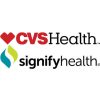The delivery of healthcare is currently undergoing unprecedented transformation. The speed and intensity with which this transformation is happening is the combination of underlying long-term trends, the evolution of technology, and the necessities of the pandemic. Let’s analyze how smart, connected devices have a pivotal impact on all these aspects.
The long-term trend we are observing is the shift from fee-for-service to value-based care. Value-based care aligns incentives for patients, providers and payers by providing monetary incentives to keep people out of hospitals. This is achieved by constantly monitoring chronic disease progression proactively, instead of just waiting for bad things to happen and patients showing up in the emergency room. Avoiding costly re-admissions can be achieved with careful hand-offs between different care providers, for example from acute to post-acute or home-health. Claudia Williams, CEO of California’s largest Health Information Exchange, brought it to the point at the 2022 VIVE event when she commented that data sharing is essential for value- based care, but providers stuck in fee-for-service models, where volume of service is king, do not like to share data.
The government is guiding data sharing in healthcare with regulations. HIPAA, which was first enacted in 1996, made it possible to share protected health information to improve transitions of care. As we are transitioning to value-based care, the 21st Century Cures Act from 2016 makes it mandatory to share data, unless some specific exceptions can be invoked. This shift from “can share” to “must share” demonstrates the importance of data sharing for improving healthcare.
HL7 v2 is a standard developed in the 90s, the era when HIPAA was first enacted. It is a structural file based standard that allowed data sharing at a rudimentary level, for example to transfer lab results from the lab system to the electronic medical record and from there, to a certain extent, to the billing system. HL7 v2 to this day is the workhorse of clinical data interoperability, with an average sized hospital transacting 2 to 3 million messages per day, 100’s of millions per day across large health systems and billions per day across the United States fast and reliable. However, HL7 has limitations. Because it is just a structural standard, it requires synchronizing configurations between different systems for good interoperability, which gets increasingly complicated the more systems are connected. Also, because it was developed prior to the internet, it doesn’t allow on-demand access to data but rather relies on broadcasting message types. FHIR, a newer web-based HL7 standard, is gaining momentum in recent years, as it allows access to specific “interoperability resources” with much stricter content definitions.
Smart devices benefit from both the regulatory and technological progress. In the spirit of preventing medical errors, caused for example by erroneous data entry, devices can be connected with the EMR and request specific input data, such as the BMI, blood type or allergies. They can also transmit data securely, eliminating the need for a nurse to read and then enter data manually. Note that this is different than controlling a medical device remotely, which is FDA regulated. Secure bi-directional data exchange simply eliminates the risk of erroneous data entry. But since this process can occur continuously, it also allows offer additional benefits. Data can be sampled much more often—every minute instead of every hour—thus reducing the risk of missing a critical event. Moreover, the patient location and the EMR can be disintermediated—and that has opened the possibility of a whole new set of opportunities.
The pandemic was a catalyst for exploring alternate care settings, for example using remote monitoring with smart devices combined with televisits to allow no-touch at-home care delivery. Hospital-at-Home programs opened opportunities for hospitals overwhelmed with COIVID cases to deliver high quality care outside of their traditional care setting, but the value of these programs extends well beyond the pandemic; in the context of value-based care, there are more and more use cases based on continuous data sampling for early detection of any health status changes. More devices that measure both biologics and biometrics combined with smart bi-directional integration create many opportunities for providers to contract successfully in risk-based programs by keeping patients out of the ER.
The reality is that the transition from HL7 v2 to FHIR that started many years ago is far from complete. While the recent 21st Century Cures Act did introduce some workflows based on FHIR, it is largely silent on the underlying technology. Device manufacturers can therefore not rely on the existence of FHIR interfaces or even FHIR capabilities of a connected EMR, even though FHIR-based interoperability has so many advantages. Luckily there are technologies available today that are based on light weight intelligent agents that can be installed and distributed with every device to collect and securely transmit data to a collection point—even over mobile internet connections—where it can be transformed automatically from HL7 FHIR into HL7 v2 (in order to interface with legacy systems) and vice versa, opening the doors to widespread deployments.
The combination of technological progress on the device side with the progress in modern healthcare interoperability in a climate that favors data sharing to improve outcomes in value-based care will allow preventive care in unprecedented ways, and the pandemic delivered a catalyst to experiment with remote monitoring programs that will have an impact long after we put the pandemic into the rear view mirror.







